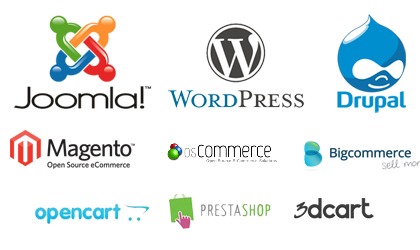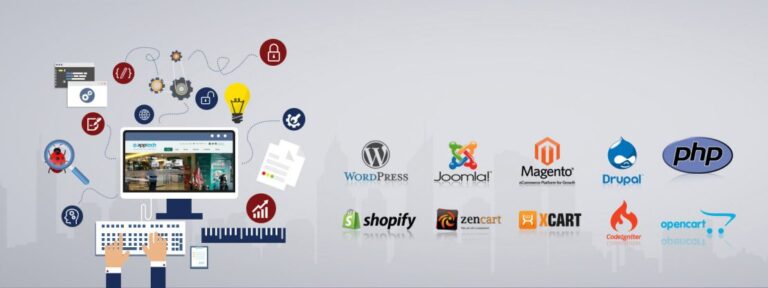
When selecting a content management systems (CMS) for your business, it helps to comprehend the variances between the numerous types, their features and functions, and pricing models.
Types & examples of content management systems:
1- Open-source CMS
You can download open source CMS software at no initial cost. There are no authorization or advancement fees, or agreements. However, with open source CMS you may have to pay for:
- Technical help during installation and setup
- Customization to encompass the software beyond the essential offering
- Well-matched templates, add-ons, and plugins (although free versions may be available)
- Staff training
- Care, including regularly apprising the software

Examples of the most widely used open-source CMS platforms include:
You can install and manage open source CMS on a web server. While most answers work out of the box, countless customizations are available to meet the different business needs, such as plugins for e-commerce websites, tools to help you enhance content for search engines or customize your design themes and plans.
2- Proprietary CMS
Proprietary or saleable CMS software is built and managed by a single company. Using such CMS generally involves:
- Buying a license fee to use the software
- Paying monthly or annual charges for updates or support
You may also need to pay additional costs for customization and upgrades, as well as for training and ongoing technical or user support.
Examples of popular CMS solutions include:
- Kentico
- Microsoft SharePoint
- IBM Enterprise Content Management
- Pulse CMS
- Sitecore
- Shopify

You can usually modify proprietary CMS with built-in functionalities, although this may come at extra cost. If possible, look for a CMS solution that meets all of your necessities out of the box. If you are applying a proprietary CMS with an existing website or back-end system, be aware that this may require extensive development work.
3- Software as a Service (SaaS) CMS
SaaS CMS solutions usually include web content management software, web hosting, and technical support with a single supplier. These are cybernetic solutions hosted in the cloud and based on a subscription model, usually on a per-user or per-site basis. The pricing usually includes:
- Amount of data allocation (i.e. Bandwidth to and from your site)
- Storage for your content and data
- Ongoing support
There are two types of cloud content management systems:
- ‘Fully cloud’ CMS often comes as part of a bundle or package. Naturally, these are proprietary systems under the provider’s control, so it isn’t always possible to customize or alter their functionality to suit your needs.
- ‘Partial cloud’ CMS is located on your own cloud web-server. It provides for greater elasticity since you can adjust the functionality, either with add-on modules or by altering the source code.
Cloud CMS offers some noteworthy benefits to small and medium-sized businesses. For example:
- Costs are generally low – small set up fee usually covers a basic implementation
- SaaS supplier deals with upgrades, maintenance, and technical issues
- The software is accessible from any computer, laptop or mobile with an internet connection
- Updates to software and features are available in real-time
- Packages are easily scalable – you can add more sites or users as your needs change






; ?>/theme/images/logo.svg)






